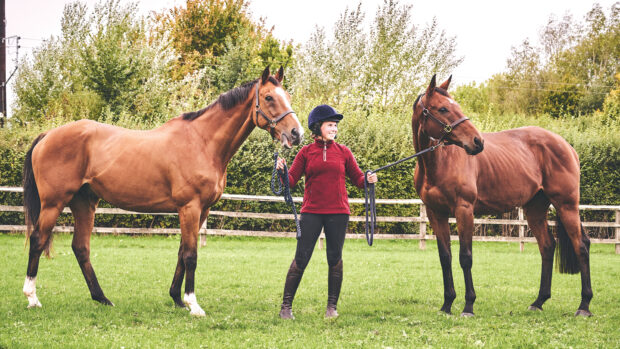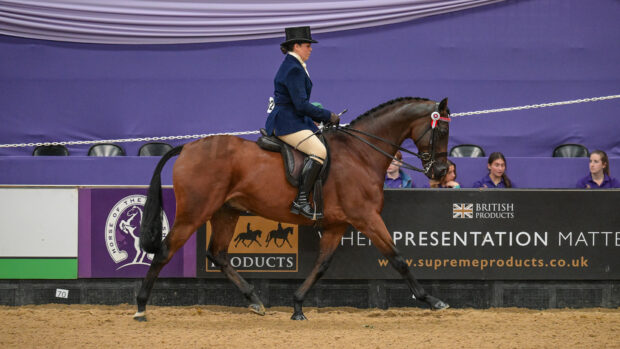AFTERCARE needs to be an active consideration at every stage of a horse’s life – from conception to grave – if the industry is to become future-proof.
The discussions came at the second part of the 2022 International Forum for the Aftercare of Racehorses (19 April).
“Who are the future participants going to be? We look to gen Z and we look to millennials. For us to advance and see how our industry is going to shape up, we need to look at their cultural values,” said Australian owner and breeder Michael Drapac, adding that studies show these generations value social responsibility and environmental concerns above everything.
“For me, every aspect of the breeding and racing industry must revisit what they do and look at things through the lens of horse welfare and their purpose beyond their productive racing career. It’s as simple as that,” he said.
He said shared responsibility is philosophical as well as financial, asking if horses would be weaned or backed differently and different aspects brought into training, if aftercare was also at the forefront of people’s minds.
“Everyone who is a beneficiary of the horseracing industry has to carry their weight. We must stop passing the bill,” he said.
Mr Drapac suggested further ideas for that shared responsibility, including whether retirement plans should be submitted with horses’ racing registration, and possibly increased licensing and regulation for breeders.
“Imagine when a horse is sold at sales, he is sold with a trust account,” he said, adding that this could be established by the breeder and contributed to by those involved with the horse.
“Stretching that further, it’s quite possible that the public could contribute – imagine if any champion horse had a trust fund attached to him, the public winning money on him could easily contribute.”
The nature of racing in Hong Kong means all horses are imported, and all equestrian activities fall under the auspices of the Hong Kong Jockey Club (HKJC).
HKJC centralised medical records mean horses’ health can be tracked and managed in a joined-up way, from their racing days to second careers.
Dr Adrian Farrington, executive manager of veterinary clinical services at HKJC, said this means they can also deliver consistent education, and subtle performance-limiting issues can be managed before they become irreversible changes at retirement.
“The transition of the retiring racehorse starts well before the date of their actual retirement,” said Dr Farrington.
The median retirement age in Hong Kong is 5.5 years, and there are also strict age and performance limits on when a horse must end his racing career, if he has not already done so (11 years old or should their rating fall before below 25).
“Owners are required to hold a permit to import a horse for racing and pay a fee at the time of import that will ultimately go toward the treatment costs,” added Dr Farrington. “In 2022, that fee was HK$100,000 [around £9,800]. At the time of retirement the owner may elect to privately export their horse, in which case they receive a travel subsidy up to the value of the import fee they paid. Or they may relinquish the horse to HKJC, in which case the fee is paid towards the cost of rehabilitation and retraining of the horse.”
The split is around 50%, and those remaining in Hong Kong go through a thorough assessment and training plan when establishing what second career they would be best suited to.
Natasha Rose, HKJC equestrian affairs project manager and retired racehorse unit manager, said the close links between racing and the equestrian industry in Hong Kong are key to its sustainability.
“Because we don’t breed horses in Hong Kong, we [the equestrian industry] are heavily reliant on our retired racehorses and they do such a fantastic job,” she said. “Our public riding schools could have up to 50% of their horse population that are teaching people to ride, as retired racehorses. That’s quite a unique model that’s not necessarily replicated that often around the world, but it just shows it can be done.”
She added: “Being able to communicate and collaborate on an international scale – not only with racing jurisdictions but also with different equestrian bodies and associations around the world. That’s the way we will really help break those barriers and stigmas about the thoroughbred, and show they are very versatile for a life after racing.”
Stud manager of Forenaghts Stud Caoimhe Doherty is co-founder of not-for-profit Irish organisation Treo Eile, which provides assistance on retraining and rehoming.
She agreed that connecting sport horse and thoroughbred industries is the way forward.
“If we are to look 20 years down the line, we all have to be on the same page. We have to be working together,” she said, adding that both face the same challenges in future.
“The younger generations are looking at not just horse racing, but the use of animals in sport. We’re not doing anything wrong, but we have to be able to communicate what we are doing, we have to be able to explain, defend, educate and show people what’s involved in our industries and all the good work we are doing.”
You might also be interested in:

Life after racing: is it time to retire the term ‘retired’?

‘People like us don’t win things like this’: Former racehorse takes elementary title at national dressage championship

Subscribe to Horse & Hound magazine today – and enjoy unlimited website access all year round
Horse & Hound magazine, out every Thursday, is packed with all the latest news and reports, as well as interviews, specials, nostalgia, vet and training advice. Find how you can enjoy the magazine delivered to your door every week, plus options to upgrade your subscription to access our online service that brings you breaking news and reports as well as other benefits.




